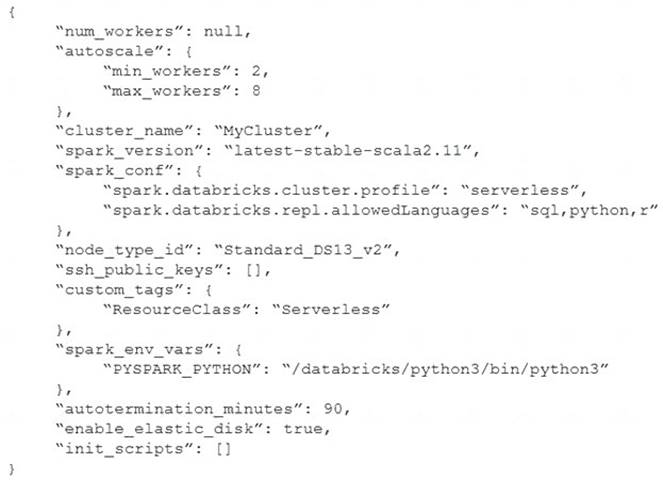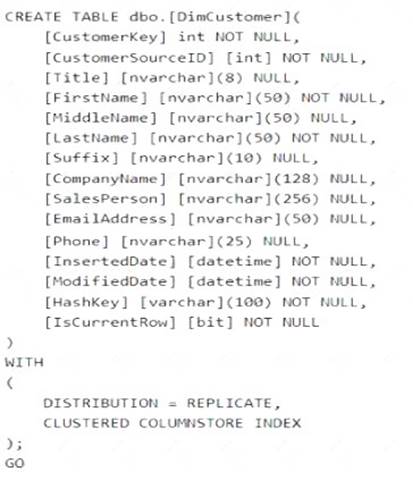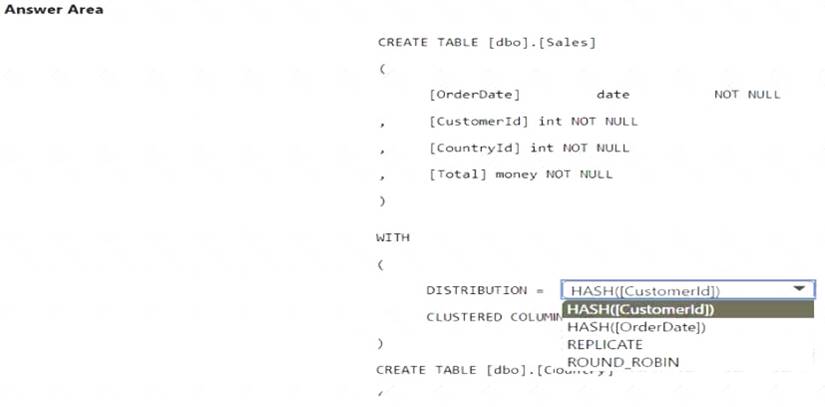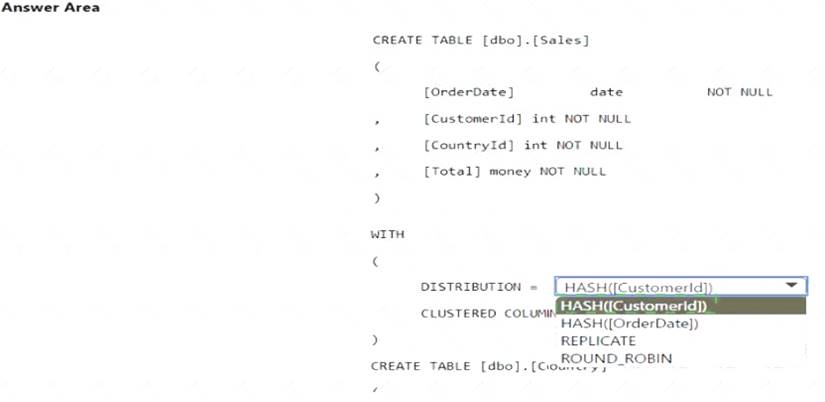- (Exam Topic 3)
You have an Azure Data Lake Storage Gen2 account that contains two folders named Folder and Folder2. You use Azure Data Factory to copy multiple files from Folder1 to Folder2.
You receive the following error.
What should you do to resolve the error.
Correct Answer:
A
Reference:
https://knowledge.informatica.com/s/article/Microsoft-Azure-Data-Lake-Store-Gen2-target-file-names-not-gene
- (Exam Topic 3)
The following code segment is used to create an Azure Databricks cluster.
For each of the following statements, select Yes if the statement is true. Otherwise, select No.
NOTE: Each correct selection is worth one point.
Solution:
Graphical user interface, text, application Description automatically generated
Box 1: Yes
A cluster mode of ‘High Concurrency’ is selected, unlike all the others which are ‘Standard’. This results in a worker type of Standard_DS13_v2.
Box 2: No
When you run a job on a new cluster, the job is treated as a data engineering (job) workload subject to the job workload pricing. When you run a job on an existing cluster, the job is treated as a data analytics (all-purpose) workload subject to all-purpose workload pricing.
Box 3: Yes
Delta Lake on Databricks allows you to configure Delta Lake based on your workload patterns. Reference:
https://adatis.co.uk/databricks-cluster-sizing/ https://docs.microsoft.com/en-us/azure/databricks/jobs
https://docs.databricks.com/administration-guide/capacity-planning/cmbp.html https://docs.databricks.com/delta/index.html
Does this meet the goal?
Correct Answer:
A
- (Exam Topic 3)
You have an Azure subscription that contains an Azure Synapse Analytics dedicated SQL pool. You plan to deploy a solution that will analyze sales data and include the following:
• A table named Country that will contain 195 rows
• A table named Sales that will contain 100 million rows
• A query to identify total sales by country and customer from the past 30 days
You need to create the tables. The solution must maximize query performance.
How should you complete the script? To answer, select the appropriate options in the answer area. NOTE: Each correct selection is worth one point.
Solution:
Does this meet the goal?
Correct Answer:
A
- (Exam Topic 3)
Note: This question is part of a series of questions that present the same scenario. Each question in the series contains a unique solution that might meet the stated goals. Some question sets might have more than one correct solution, while others might not have a correct solution.
After you answer a question in this scenario, you will NOT be able to return to it. As a result, these questions will not appear in the review screen.
You have an Azure Storage account that contains 100 GB of files. The files contain text and numerical values. 75% of the rows contain description data that has an average length of 1.1 MB.
You plan to copy the data from the storage account to an Azure SQL data warehouse. You need to prepare the files to ensure that the data copies quickly.
Solution: You modify the files to ensure that each row is more than 1 MB. Does this meet the goal?
Correct Answer:
A
Instead modify the files to ensure that each row is less than 1 MB. References:
https://docs.microsoft.com/en-us/azure/sql-data-warehouse/guidance-for-loading-data
- (Exam Topic 3)
You have an Azure Synapse Analytics dedicated SQL pool named Pool1. Pool1 contains a table named table1. You load 5 TB of data intotable1.
You need to ensure that columnstore compression is maximized for table1. Which statement should you execute?
Correct Answer:
B
Columnstore and columnstore archive compression
Columnstore tables and indexes are always stored with columnstore compression. You can further reduce the size of columnstore data by configuring an additional compression called archival compression. To perform archival compression, SQL Server runs the Microsoft XPRESS compression algorithm on the data. Add or remove archival compression by using the following data compression types:
Use COLUMNSTORE_ARCHIVE data compression to compress columnstore data with archival compression.
Use COLUMNSTORE data compression to decompress archival compression. The resulting data continue to be compressed with columnstore compression.
To add archival compression, use ALTER TABLE (Transact-SQL) or ALTER INDEX (Transact-SQL) with the REBUILD option and DATA COMPRESSION = COLUMNSTORE_ARCHIVE.
Reference: https://learn.microsoft.com/en-us/sql/relational-databases/data-compression/data-compression

